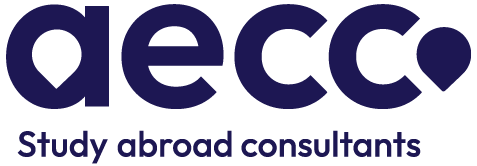Read on to get your latest updates on Universities, Courses Offered, Student Visa Updates, and lots more!


SDS and Non-SDS Visa Application – these are not just terms, but keys to your Canadian study journey. Unsure which one suits you? We're here to make it simple. This blog sheds light on SDS and Non-SDS visa application. Wondering about "What is SDS?" or how the SDS and Non-SDS visa application process unfolds? We've got all the answers. More than an article, this is your straightforward guide to understanding SDS and Non-SDS Canada visa applications. Ready to demystify the visa process? Let's dive in!
The Student Direct Stream (SDS) is a streamlined visa process for students from specific countries, including India. It's popular for quicker processing and less financial documentation.
Key Points:
Non-SDS is the standard visa application process for students who do not qualify for SDS, offering a more flexible approach with different requirements.
Key Points:
Understanding the key differences between SDS and Non-SDS Visa Application is crucial for students planning their academic journey to Canada. Here's a detailed comparison to guide you through:
|
Key Parameters |
SDS |
Non-SDS |
|
Processing Time |
Usually within 20 days |
Varies, typically longer than SDS |
|
Financial Proof |
GIC of CAD 10,000 (₹5,99,000 INR) |
Detailed financial documentation required |
|
Education Loan Evidence |
Mandatory, with proof of first year’s tuition |
Not mandatory, but beneficial |
|
IELTS Score Requirement |
Minimum 6.0 in each band |
Varies by institution |
|
Medical Exam |
Required upfront |
Required, timing varies |
|
Cost of Application |
Approx CAD 150 (₹8,995 INR) for visa |
Similar, with the potential for additional costs |
|
Documentation |
Streamlined, less extensive |
More comprehensive and detailed |
|
Flexibility in Process |
Less flexible, strict criteria |
More flexible in terms of criteria and docs |
|
Application Reach |
Limited to certain countries (e.g., India) |
Available to all nationalities |
To help you gain more clarity on this topic and understand better the differences between them, here is the real-life experience of Anjali, an aspiring software engineer from Bangalore, who faced a similar dilemma.
For Anjali, with an acceptance letter from a prestigious Canadian university, she was puzzled by the visa process. Should she choose SDS with its faster processing but strict financial proof or the more flexible Non-SDS? Weighing her options, Anjali decided on SDS, meeting the financial requirements through a ₹5,99,000 INR education loan. The decision paid off. Within 20 days, her visa was approved, paving the way to her dream course. Her story highlights the importance of informed decisions in navigating overseas education pathways.
The Student Direct Stream (SDS), particularly for the SDS System for Indian Students, has specific English language requirements:
Detailed Insights:
When it comes to the SDS and Non-SDS visa application process, understanding the financial and health requirements is vital. Here's a breakdown with exact figures and requirements:
Specific Details:
When preparing for an SDS and Non-SDS visa application, it's essential to know the specific documents required and understand the application process.
Detailed Insights:
Opting for an SDS visa over a Non-SDS visa can be advantageous for students, especially those under the SDS System for Indian Students.
Key Advantages:
As we conclude our journey through the intricate world of SDS and Non-SDS Visa Application, it's clear that understanding these processes is crucial for your successful study venture in Canada. Whether you opt for the streamlined SDS visa application process or the flexible Non-SDS route, being well-informed is key. Ready to take the next step towards your Canadian educational dream? Connect with AECC today, and let's turn your study abroad aspirations into a reality.
Is an SDS visa faster?
Yes, the SDS visa process is typically faster, with processing times around 20 days.
What is the success rate for SDS vs non SDS 2023-24?
While exact rates vary yearly, SDS generally has a higher success rate due to streamlined criteria.
Who is eligible for SDS?
SDS is available for students from specific countries, including India, with certain financial and language criteria.
Is there any risk in submitting a student visa for Canada in the general category instead of SDS?
Non-SDS has more flexible criteria but may involve longer processing times and extensive documentation.

Test Preparation
Premium Counselling
Get in Touch
About Us
Our Partners
Quick Links
Book your FREE consultation with Certified Counsellors
Missed our working hours?
Fill out this form for a callback!